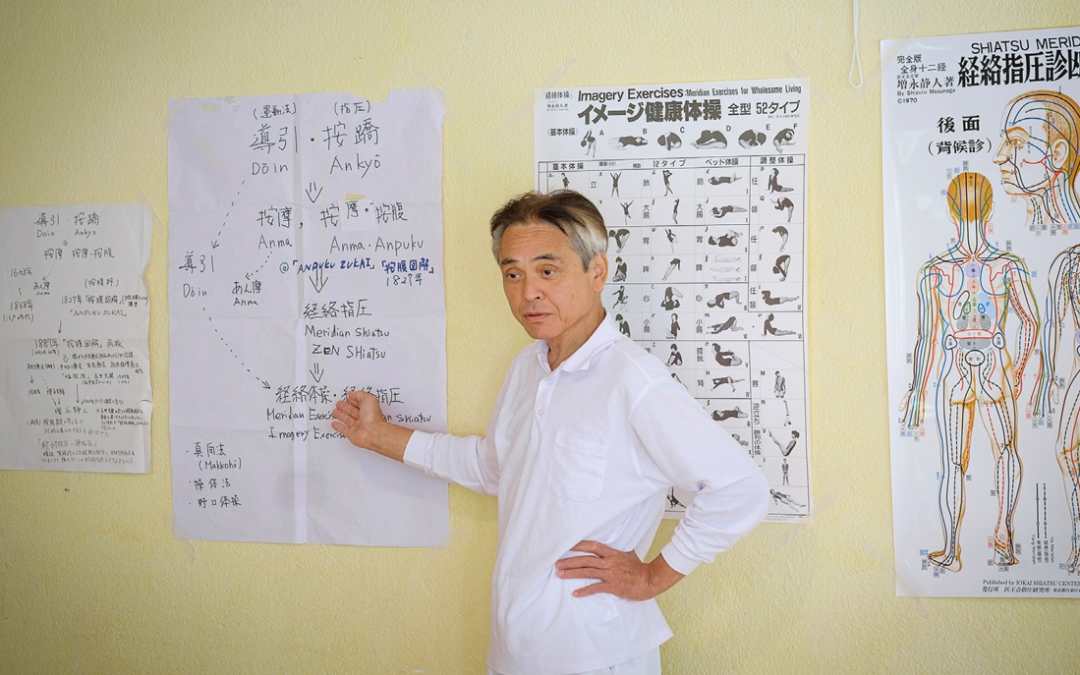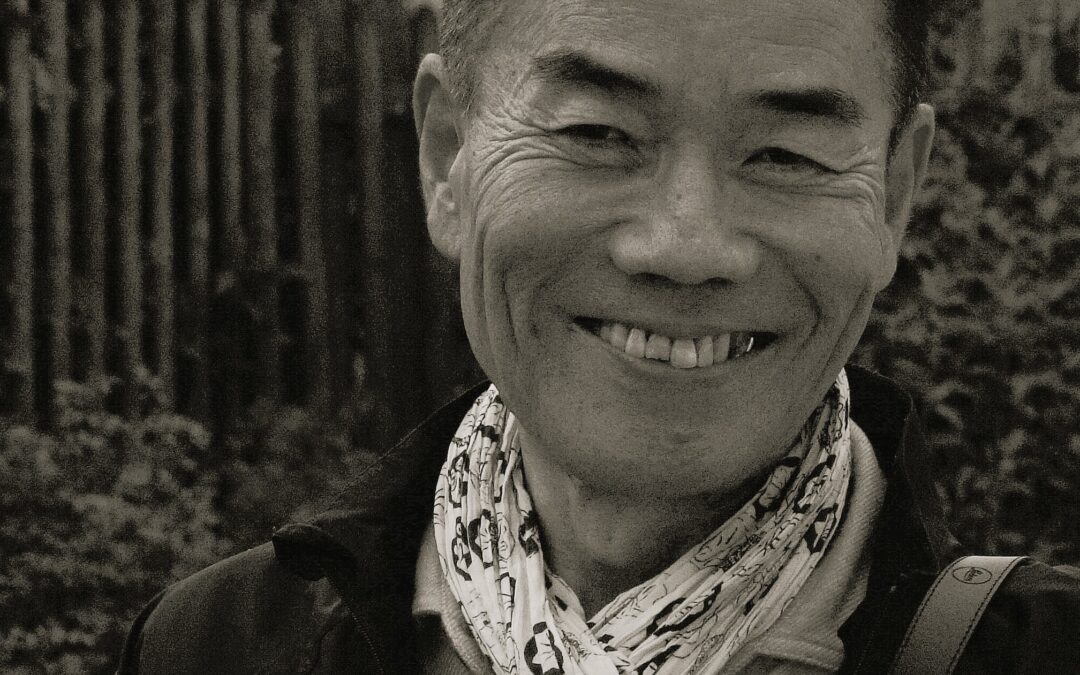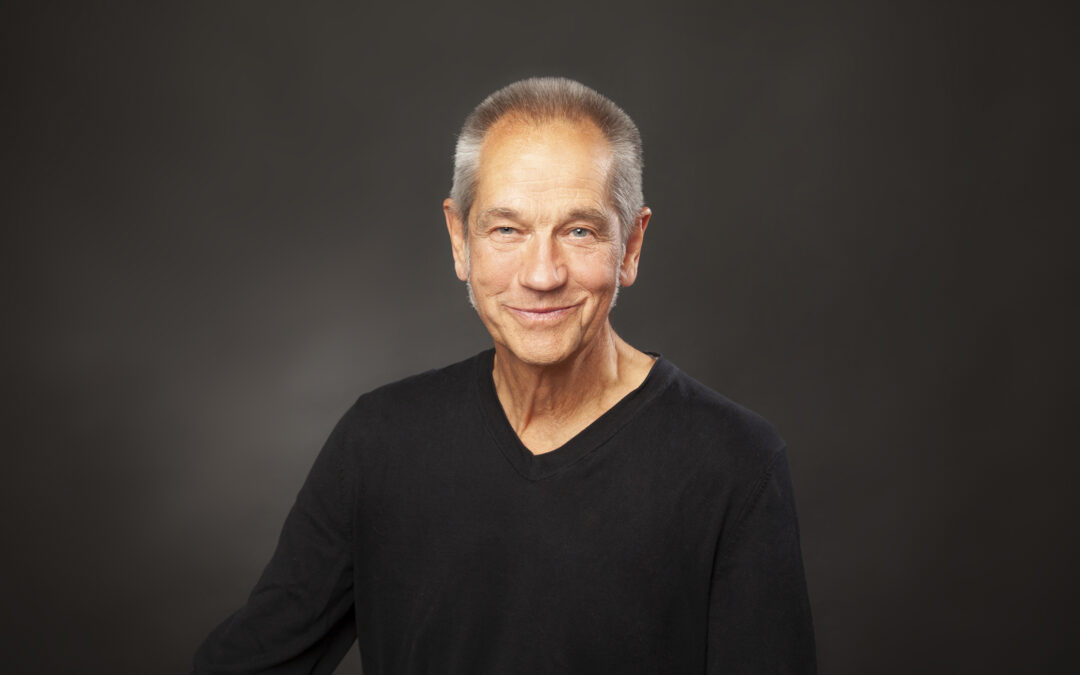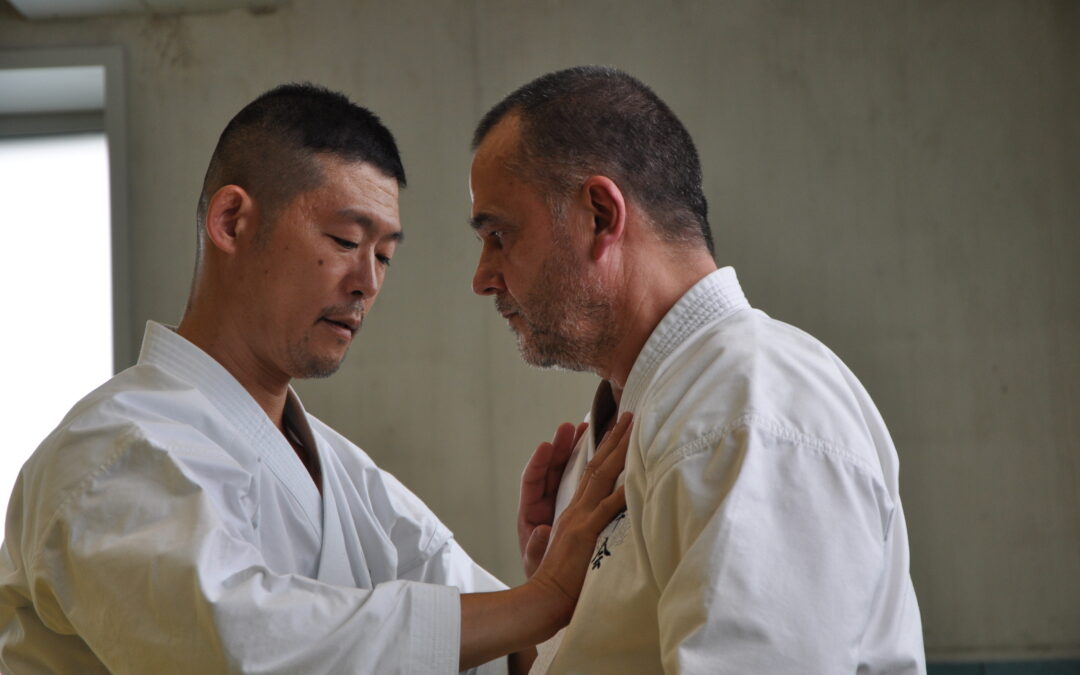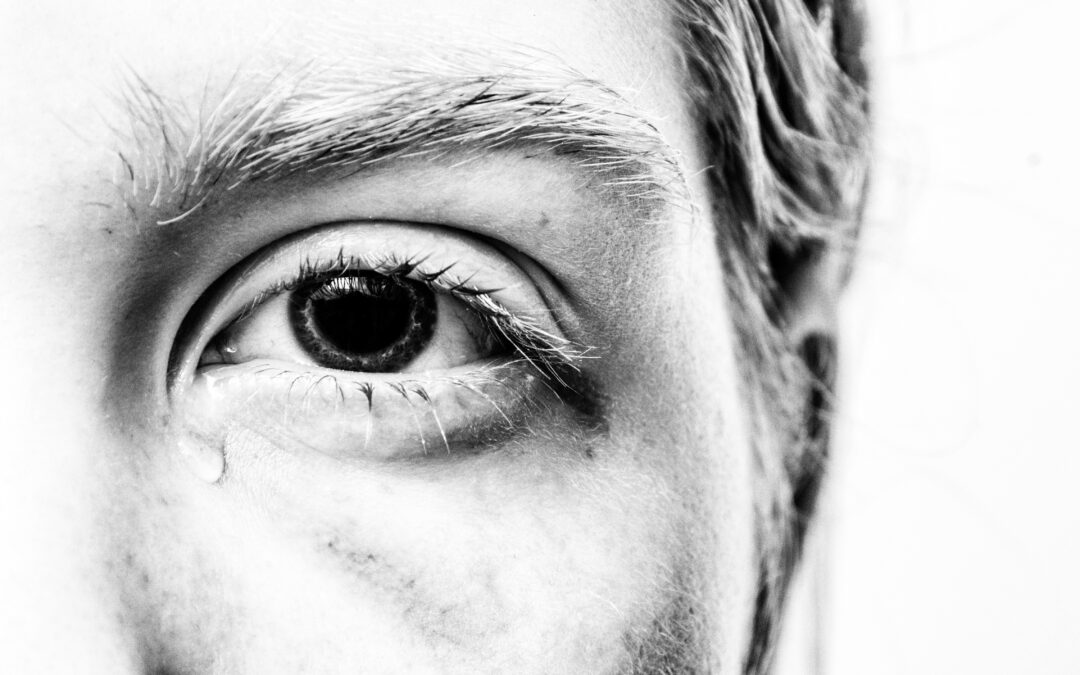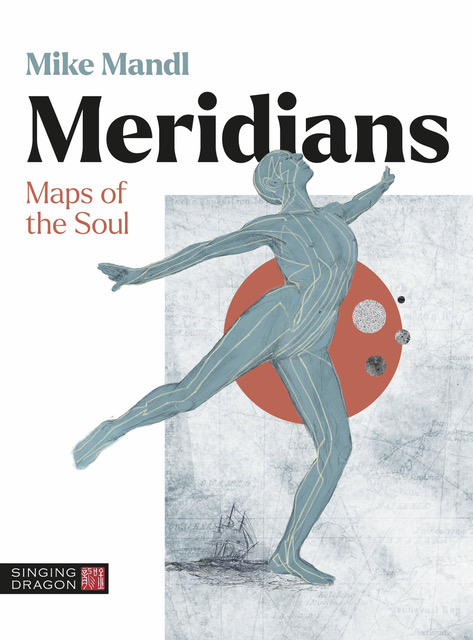When I met Leisa Bellmore at the European Shiatsu Science Congress in London in 2017, she was presenting her first study. For the past 6 years, she has been continuing her studies on sleep disorders using a simple self-shiatsu protocol. By changing the target audience, she wanted to see if the effects were the same or not. In the meantime, she followed and completed studies to become a real researcher, which allowed her to obtain funding from the Canadian government for her last study. So, let’s take a look at her research and what she discovered, as well as the subject she is passionate about today: Alzheimer’s.
Ivan: Dear Leisa, it’s the second time I’m interviewing you. The first time was in 2017 when we met in London. You were doing a study on insomnia with people who were in chronic pain.
Leisa Bellmore: Yes, and since that time we have done 3 studies using hand self-shiatsu.
The first study was with adults who experienced chronic pain and had sleep problems and the second study was with adolescents and young people who also have chronic pain and sleep problems.
The 3rd study was a larger one with military veterans and their partners who had sleep problems. So, they didn’t necessarily have chronic pain but of course, being military veterans, they had a number of issues. Some of them had pain, some of them had anxiety, but they all had sleep problems.
Is it due to PTSD?
Possibly partly because of that, but other factors as well, I think, because their schedules can be so unpredictable, it is very difficult for them to have a routine and get good sleep. And then for their family members as well, they have higher incidence of sleep problems, I think because of the worry and the stress of that life.
OK, let’s start slowly. First you are a tireless researcher in Shiatsu. Why this passion?
You know, I love Shiatsu and I am very passionate about it and it has always bothered me that it is not taken as seriously as some other interventions in the main stream medical community and part of that reasoning is that there is not a lot of evidence supporting Shiatsu. So, I decided a long time ago I wanted to try to grow that evidence base, do some research and encourage others to get involved in research as well so that maybe we can slowly build the evidence base, not only to know more about the effects of shiatsu, but also to learn more about how it works. This will help it become more integrated into the main stream health care system.
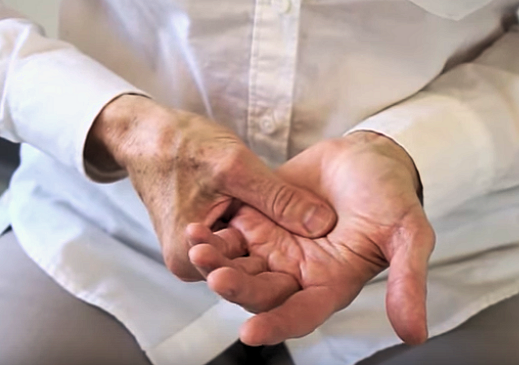
I listened to a video about that. There was a doctor who said he checked all the studies about Shiatsu. Some of them are not done scientifically, I mean, for example with double blind groups. Of course, it is hard because you have to be in touch with people would could do that and have enough time, enough money and so on… (laughs). So tell me, how much time do you need for just one study?
A long time! (laughs too) Medical studies or studies on pharmaceuticals have the funding to do research. It’s a labor of love…I end up spending a lot of time that I’m not paid for to do this. But with those 3 studies that I did, I teamed up with other researchers so I got to rely on their expertise, and they on mine, and I learned from them and the work was shared. They put in long hours because they were paid to do so (by their faculties, their universities…). So, it was easier to do it that way. But to your point, that studies on shiatsu are not double-blind studies, they are not but that doesn’t mean they are not valuable.
That said, I’m currently working on a systematic review with a colleague of mine: Stergios Tsiormpatzis. You probably met him in London as well during the conference. Anyway, he and I are working on a systematic review of the safety and risks of shiatsu. So that involves looking at every study that there is on shiatsu, and seeing if there were any adverse effects that occurred in these studies. I believe we ended up with about 200 published studies but not all of them are from peer-reviewed journals.
Can a case report be useful for Shiatsu research?
Yes, absolutely. As soon as we have an interesting case, we can write down absolutely everything and make a case report. All practitioners can do this with a little bit of method and rigour. Of course, you need is the patient‘s consent. This will give useful information to other practitioners and can be a basis for future studies. This type of study is quite short and can take one to three months.
How long did your last study take you?
A couple of years. Between getting the ethics approval, getting ready, doing it, doing data analysis, writing it up and submitting it to publication, it took about two years. We also applied for funding and received some funds which is great. The funding came from Veterans Affairs Canada, a government organization. So the funding allowed us to create a website with the training resources: a video, handout, and app for smartphones, along with links to the studies.
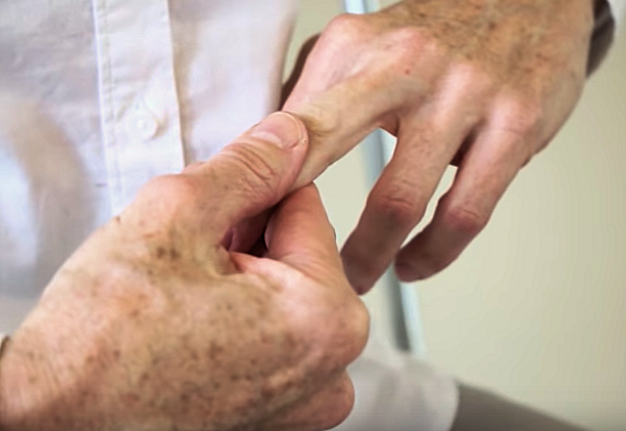
That’s awesome! Let’s talk about your studies one by one. The very first one was about people with chronic pain and dealing with sleep disorders.What were the results?
We studied the results using objective and subjective measurements. We used a wrist-worn device called an Actigraph that measures a number of things related to sleep. And we used a number of subjective self-report measures that look at things like how quickly they fell asleep, the number of nighttime awakenings, the quality of their sleep. The objective measurements didn’t show any significant improvements, but the subjective improvements were significant : people felt they were sleeping better, recovering better, sleeping deeper, and falling asleep faster. We saw the same pattern in all our studies that were done afterwards. It is very interesting, because it is the same pattern that has been demonstrated in other studies on sleep, not only ours.
What protocol should they follow in Shiatsu in order to improve their sleep?
In all of the studies it is always the same protocol. Self-shiatsu on the hands, following a simple pattern on the back of the hand (see picture), the fingers and the palm. This is a routine of about 12 minutes. But some people couldn’t finish because they fell asleep before it was over.
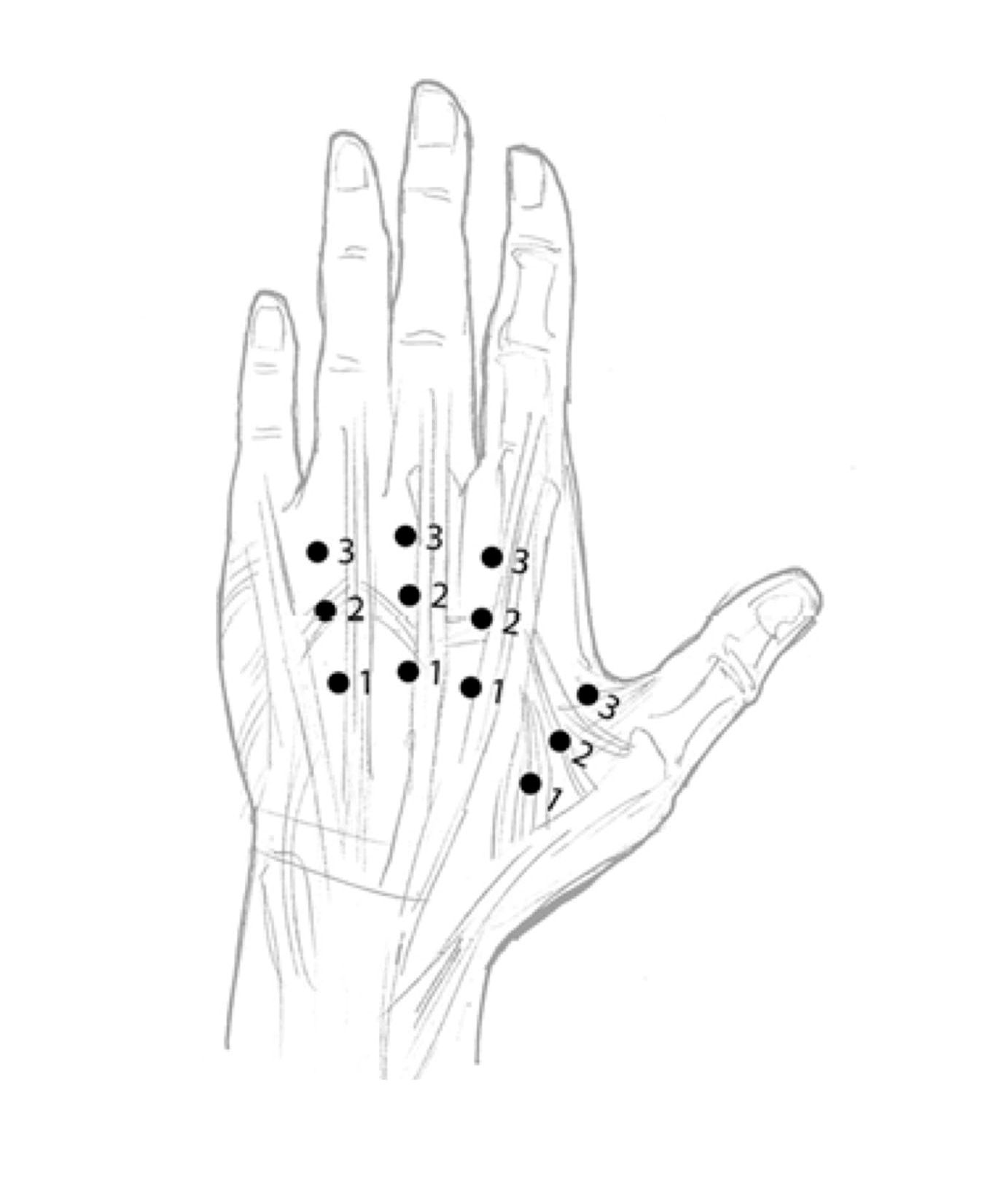
Which is great (laughs). Well that was published in 2014, but then you conducted another study. Who was the target audience?
This was published in 2020. It’s also a small study of 18 people aged 17 to 27. At that age people often have problems sleeping, especially because of phones and computers. They also had chronic musculoskeletal pain. We applied the same protocol again. We just changed the participants to see if that would change the results, but it didn’t. It was very similar. What participants liked was to have the independence to do the treatment themselves and to have control over their health rather than go to a Shiatsu therapist. So again, there were not objective improvements, but the subjective measurements showed significant improvements.
The third study you’ve done was with military Vets…
… and their families because they often have sleep problems also. So it was both the Vets and their partners.
That’s very true. Tell me, was it again the same routine?
Yes but this time, thanks to the funds we got, we were able to do a larger study with a control group in order to compare the results. The control group continued with their normal care, like sleep medication or whatever else they might be doing, but no Shiatsu. The intervention group were using the self-hand Shiatsu.
In the Shiatsu group we had some nice results: they fell asleep faster, their quality of sleep was restored, fewer awakenings, and some even told us they decided not to increase their sleep medication. At the end of the study we taught the control group the Shiatsu protocol, so they can also benefit of sleep improvements.
If I’m not mistaken, you’ve done a fourth study with athletes, right?
In fact, I wasn’t involved in that one but they used the very same protocol. The participants were this time young athletes after post-concussion traumas and, as always, with sleep disorders. Once again, the results were the same, no improvements in the objective results but a lot in subjective ones.
What would be your dream in order to have more objective data?
I would love to do MRIs in order to see the changes in the brain while people are using self-shiatsu, but it’s very expensive.
I guess so. How do you explain that such a simple self-shiatsu protocol on the hands can trigger these results on sleep? Especially because as a Namikoshi practitioner you don’t use the specific points of oriental medicine. Can you explain that?
Well, from my point of view there are several ways to explain it.
First of all, while they are doing this 12-minute routine, they are focusing on what they are doing. So they aren’t ruminating and as you know for people who have trouble with sleeping there is often a lot going on in their minds. So, I think being focused on the technique helps.
Secondly, there are so many sense receptors on the hand that are directly connected to the central nervous system that it has a calming effect. At the same time that sensation of pressure helps the person to be more in touch with their body.
So for all these reasons I think it works.
And finally, you have one last study on your list of achievements. What is it this time?
It’s a completely different one. I did it for my Masters of Science. It’s a small pilot study on the experience of Shiatsu for familial care partners and people living with dementia. It involved a self-management intervention again. For the care partners, it was to help with the stress of caring for someone who has Alzheimer’s or related dementia. And I taught them a very simple Shiatsu routine to do on their loved one. It’s a short, simplified protocol on shoulders, arms and hands so they can do it easily.
The idea is to provide a way for people living with dementia and their care partners to communicate in a different way, because it’s always very complicated to do it in a normal way. The idea of this project started with my father who had Alzheimer’s disease for 12 years, and I did Shiatsu with him as often as I could. Not a full treatment but in a seated position you can reach the shoulders, arms and hands. He loved it! As the disease progressed and we couldn’t have a real conversation anymore, when using Shiatsu with him he was very present, very engaged. Sometimes he was a bit restless and with Shiatsu he immediately calmed down, made eye contact and smiled. Sometimes he even tried to do the same thing on my arm. It was a good way for us to connect.
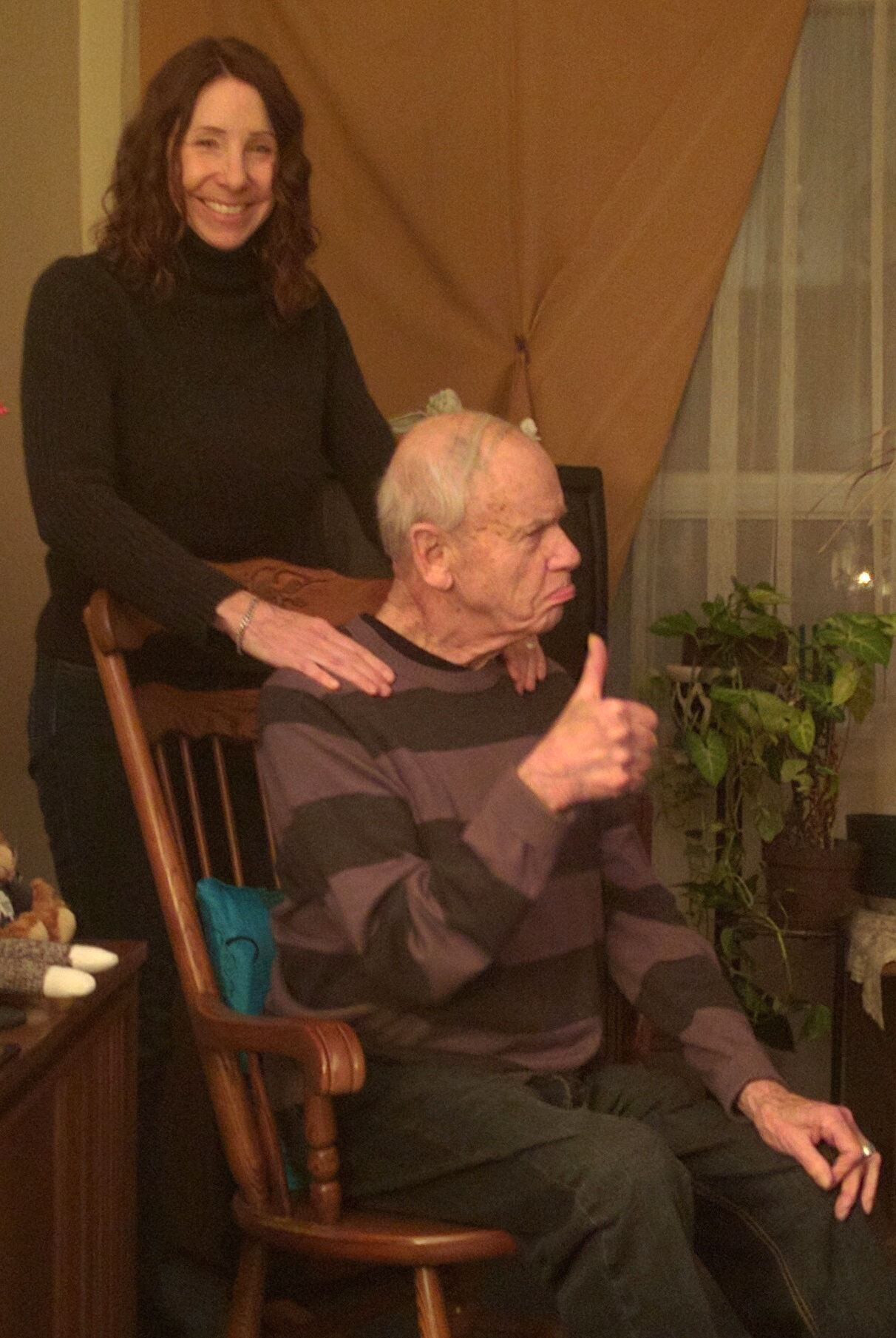
So I decided to do some workshops in different hospitals, and then decided to do the research study. The self-Shiatsu for care partners proved to be very helpful for a couple of participants. For the people living with dementia, some were resistant to receiving shiatsu, either laughing or making funny noises. One participant and her care partner really enjoyed it. It helped them to get over ‘sundowning’, evening agitation, some of these people can experience. Shiatsu helped to calm them and was a nice way for them to connect. The care partner also felt they were doing something very helpful for their partner.
It’s very interesting to know that, especially in an aging society where this situation is going to become more and more common unfortunately.
Yes, and think about this: the hands and then arms and shoulders are the most acceptable areas of the body to be touched. And you can do it easily in the seated position. If you stand in front of them they can see you, so they are not surprised, worried or anxious and you can smile to them and make eye contact, so it enhances connection even more so.
It’s great this kind of study because it’s very stimulating and I hope it will encourage practitioners to work with this kind of audience. Tell me, what will be the next study?
Well, at the moment I’m still working on the systematic review about safety and risks of Shiatsu and at the moment we’re extracting the data, so it’s going to take quite a while. But after that I don’t know. I’ve talked about a project with a colleague who works with children in a hospital, but I’d like to do a bigger, more extensive study on Shiatsu in Alzheimer’s and dementia.
Thank you very much for your time Leisa. This was really interesting. I wish you a lot of success in the coming studies.
Thank you!
To go further
- Studies: Here is the link to the training video, handout, app for smartphones and links to research studies
- Facebook page: Leisa Bellmore Shiatsu Therapist
- Instagram : Shiatsu Heals
Author
- Anpuku Workshop with Ivan Bel in London – 7 & 8th, June 2025 - 22 June 2024
- Summer intensive course: back to the roots of Shiatsu – 7 to 13 July 2024, with Ivan Bel - 27 December 2023
- Interview with Wilfried Rappenecker: a european vision for Shiatsu - 15 November 2023
- Interview : Manabu Watanabe, founder of Shyuyou Shiatsu - 30 October 2023
- The points that chase away Dampness - 11 June 2023
- Interview Mihael Mamychshvili: from Georgia to Everything Shiatsu, a dedicated life - 22 April 2023
![Contact-shiatsu[1]](https://www.ryohoshiatsu.com/wp-content/uploads/2023/03/Contact-shiatsu1.jpg)

